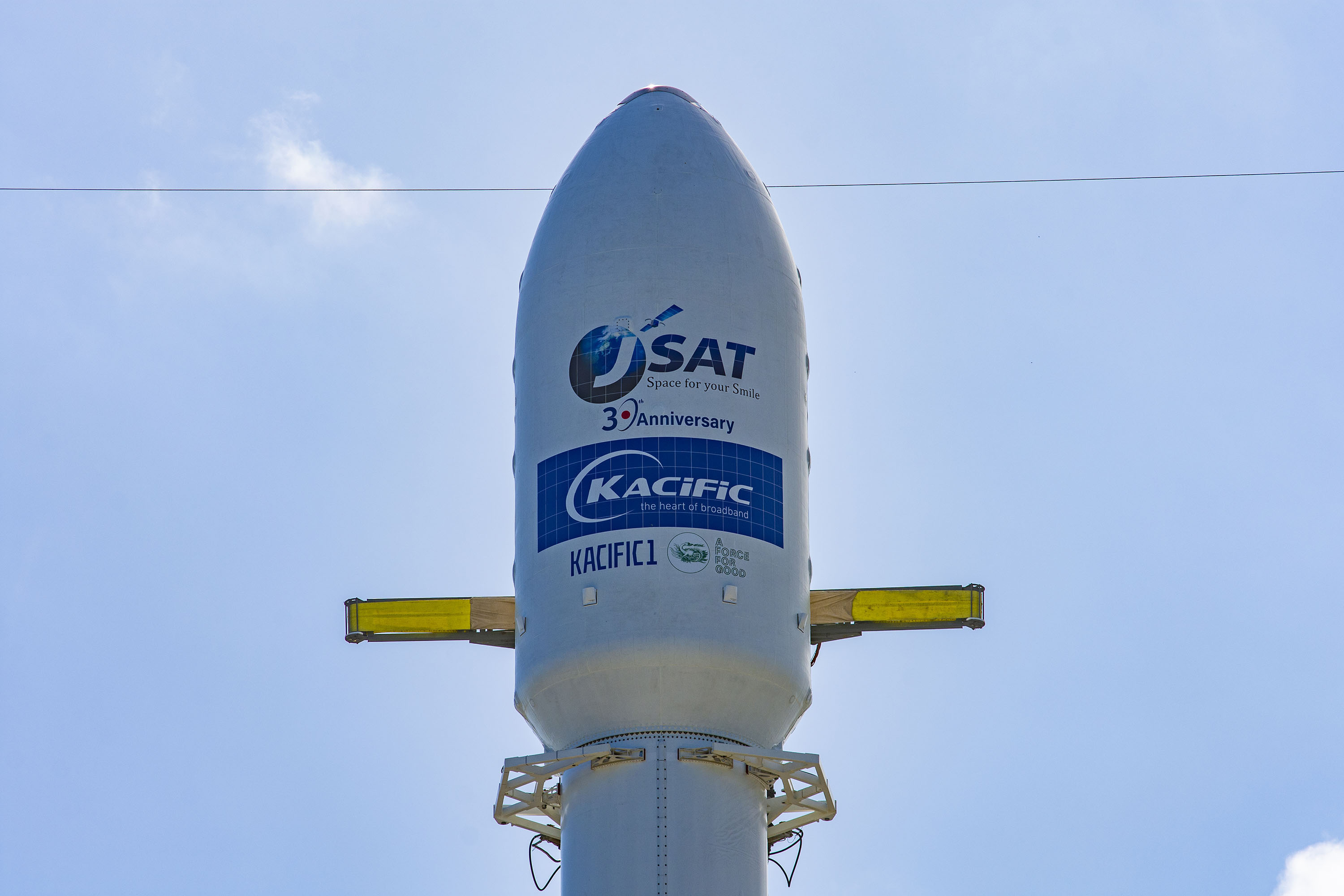Spacex Successfully Launches JCSAT-18/Kacific1 Satellite
 December 16, 2019, Cape Canaveral , Fla.-- Spacex' Falcon 9 rocket successfully launched JCSAT-18/Kacific1 satellite from Cape Canaveral, Florida at about 7:10 p.m. It will enter service several weeks after on-orbit tests and moving to its final geostationary orbit position over the Asia-Pacific region.
December 16, 2019, Cape Canaveral , Fla.-- Spacex' Falcon 9 rocket successfully launched JCSAT-18/Kacific1 satellite from Cape Canaveral, Florida at about 7:10 p.m. It will enter service several weeks after on-orbit tests and moving to its final geostationary orbit position over the Asia-Pacific region.
Built on Boeing’s 702 satellite platform, JCSAT-18/Kacific1 has two separate payloads for two customers, SKY Perfect JSAT of Tokyo and Kacific Broadband Satellites Group of Singapore. The satellite will deliver internet services to a potential market comprising hundreds of millions of people in more than 25 countries, including remote islands in the Pacific and the far eastern part of Russia.
JCSAT-18/Kacific1 will provide affordable internet access and other communications services to underserved parts of Asia and the Pacific islands. Kacific1 will stream high-speed broadband to 25 nations in South East Asia and the Pacific Islands via 56 high-throughput beams.
“JCSAT-18/Kacific1 is going to make a difference in the lives of millions of people throughout the Asia Pacific region,” said Chris Johnson, president, Boeing Satellite Systems International. “We are proud to support SKY Perfect JSAT and Kacific as they seek to bring positive change through connectivity in regions that have been traditionally underserved,” he added.
JCSAT-18/Kacific1 is the 13th satellite Boeing has built for SKY Perfect JSAT and the first satellite built for Kacific.
“Kacific1 is the newest and most powerful commercial satellite operating in the Asia-Pacific region, placing Kacific in an excellent position to grow alongside these markets,” said Christian Patouraux, Kacific founder and CEO. “Its range of services, from mobile backhaul to broadband internet via VSAT terminals, will provide a catalyst for positive change in the nations it is about to serve. I’m thrilled to start seeing the social and economic impact of Kacific1,” he added.
Kacific1 will cover Indonesia, The Philippines, Timor-Leste and South Asia with 28 spot beams, while the Pacific Islands and New Zealand will be covered with a further 28 beams.
Following a sequence of in-orbit manoeuvres and tests that are expected to take approximately six weeks, Kacific1 is scheduled to begin commercial operations in the first quarter of 2020.





